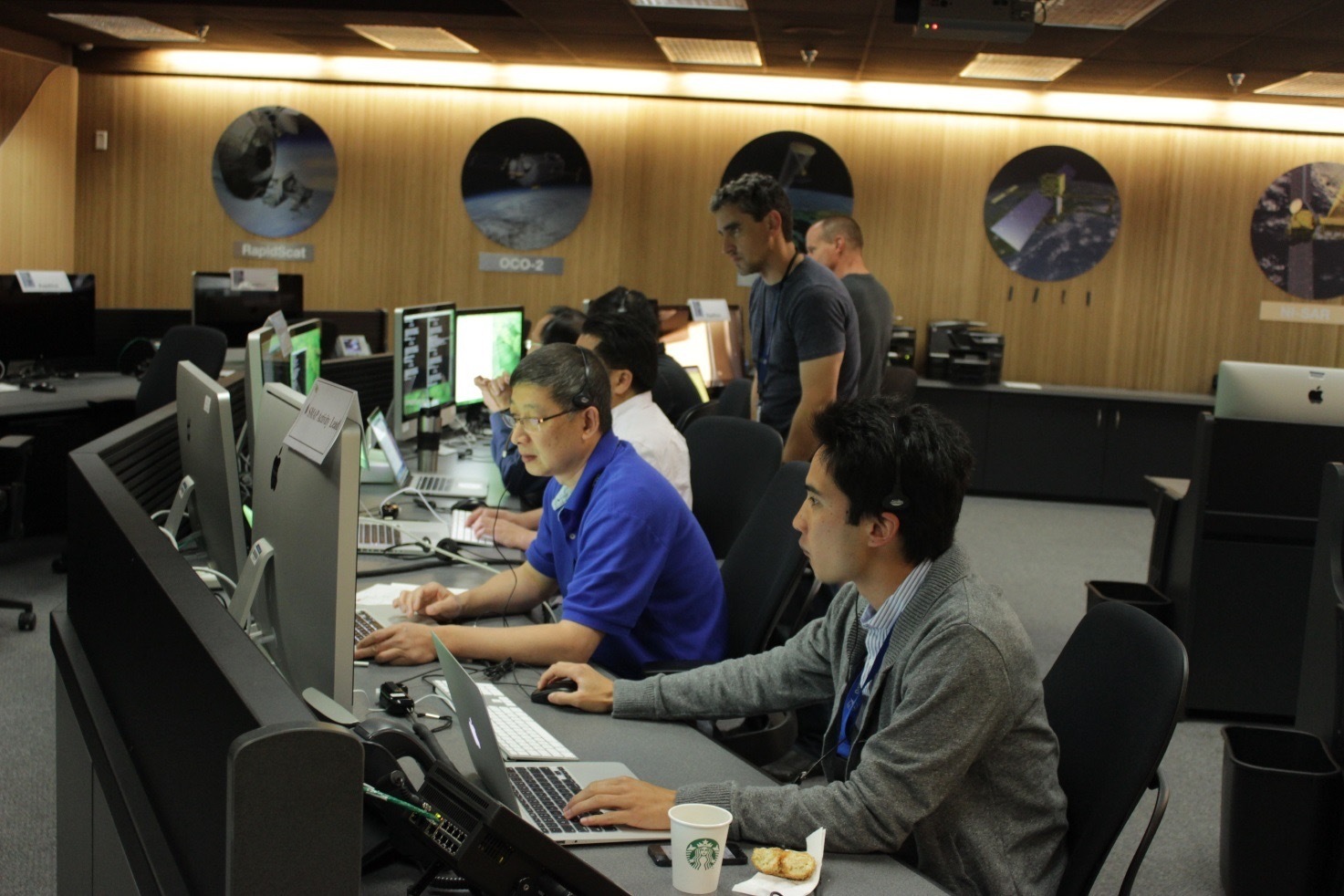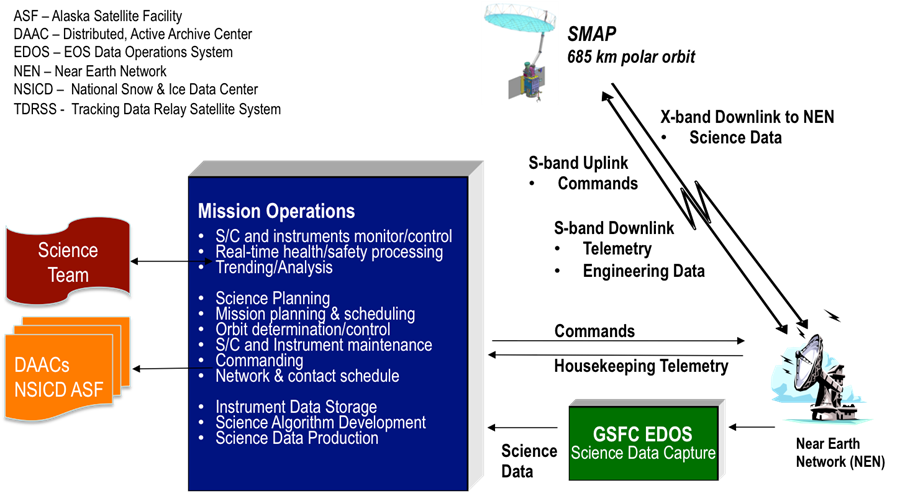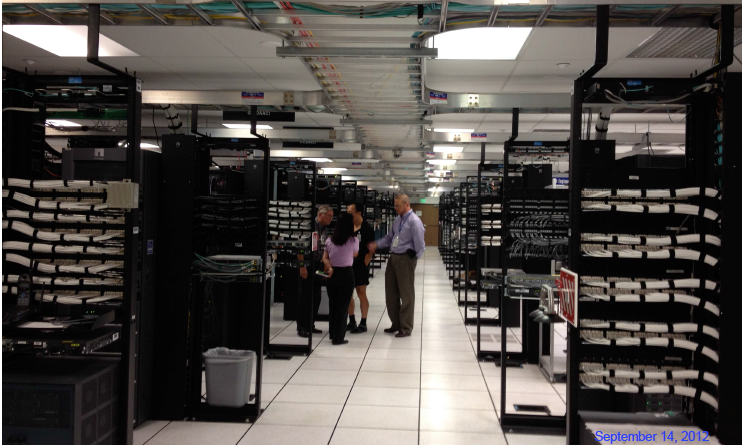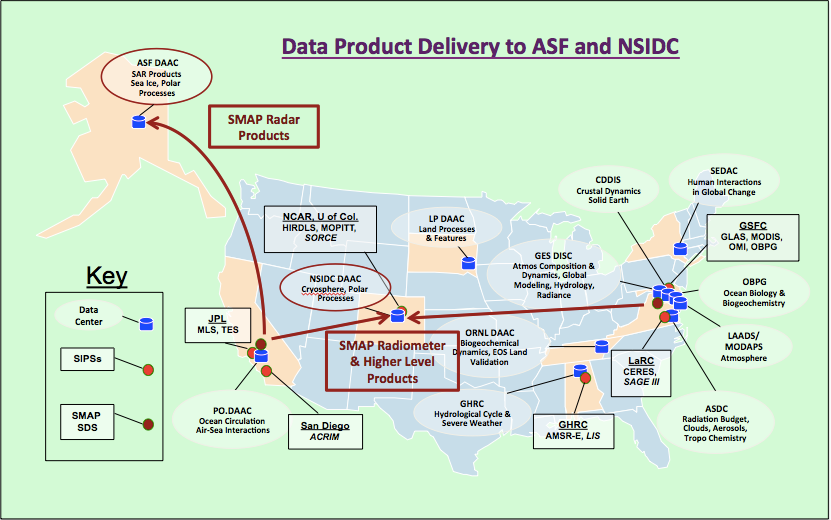
Mission Operations at Jet Propulsion Laboratory
Mission operators at JPL control the observatory and coordinate the needed infrastructure on the ground that is required to communicate with observatory and return the instrument data for processing. The observatory requires updated ‘instructions’ daily so that it is kept current on how to make its measurements and when various ground stations are scheduled to receive its data. Operators gather updates and requests from scientists, ground stations, and other stakeholders to prepare these instructions in a format that can be understood by the observatory. Operators also monitor the health and well-being of the observatory and ensure that all of its systems are operating properly. Occasionally, the observatory encounters problems that may interrupt its measurements – operators must then diagnose the problem and prepare additional instructions for the observatory to correct it.

Mission operators communicate with the observatory and receive instrument data through NASA’s Near Earth Network. SMAP produces an average volume of 135 Gigabytes per day of science data – this is like downloading more than 30 DVD full-length feature movies every day!
Because the observatory makes a complete orbit over the Earth every 98 minutes, it is only within range of individual ground stations (located at Wallops, Virginia, Fairbanks, Alaska, Svalbard Island, Norway, and at McMurdo Station, Antarctica) for a few minutes at a time. Scientists are anxious to have SMAP’s data products as quickly as possible after the instrument takes the data. For these reasons, SMAP typically has one or two downlink sessions per orbit and because of the brief time during which the observatory is in range as it passes overhead, each downlink session can receive between 5-15 GB of data. It is up to the mission operators to manage the limited on-board memory usage by balancing the rate at which it fills with instrument and other data against the rate at which it is emptied during downlink sessions with ground stations.
After the data are received at the ground station, they are relayed to JPL though the data network and server infrastructure that support all of NASA’s missions.
Science Data Processing
Science data processing is performed to convert the raw instrument data provided by the observatory to the various data products that are used by scientists. Data processing begins with locating where on Earth and at what time was each data point taken from precise knowledge of where the satellite is in its orbit over the Earth and where the scanning instrument was pointed when each data point was taken. Using calibration information developed during the Cal/Val campaign, processes painstakingly convert the satellite data to soil moisture and freeze-thaw data. The process requires much more than just than just the instrument data – a large amount of ‘ancillary’ data is also required that provides additional information on land cover, topography, and atmospheric conditions at the time and location of each data point. Ancillary data come from a variety of other data sources outside the Project, and SMAP leverages this existing data to improve the accuracy of its data products. Some ancillary data must be updated daily (atmospheric conditions) while others do not change (global topographic digital terrain maps). SMAP processing uses 130 different ancillary data sources in its processing.
Needless to say, processing such large volumes of data from many diverse data sources is a highly complex operation. Many scientists and application users of SMAP data need the data products within 12 to 24 hours of when the data were taken by the observatory – the quick turn-around is another challenge for the data processing on the ground. To meet these challenges, SMAP data processing uses large numbers of parallel processors that break up the processing job so that it can take much less time than would be required by a single processor. Massive amounts of memory are required to support the processing operation and also to store the data products when they are complete.
Science Data System Facility

All SMAP data products are sent to NASA Data Centers where they are available for everyone – scientists, applications users, and the public. The Data Centers also provide a long-term archive for all SMAP data. After it is released, SMAP data are delivered to two archives:
Radar Data: Alaska Satellite Facility Data Center
Other SMAP data: National Snow & Ice Data Center
NASA’s data centers provide convenient search functions to allow scientists and the public to find and access data that’s of interest. Check it out!





